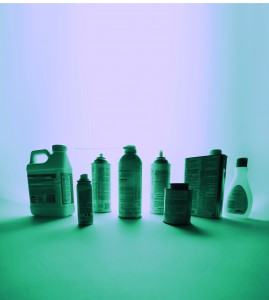 Huffing, bagging, sniffing … all terms commonly used to describe the act of inhaling dangerous household products. The Blue Ridge Poison Center states over 1,000 household products including typewriter correction fluid, cooking spray, nail polish remover, spray paint and glue can all be used in this manner.
Huffing, bagging, sniffing … all terms commonly used to describe the act of inhaling dangerous household products. The Blue Ridge Poison Center states over 1,000 household products including typewriter correction fluid, cooking spray, nail polish remover, spray paint and glue can all be used in this manner.
While most parents talk to their kids about the dangers of alcohol or illegal drugs such as marijuana, most aren’t aware that adolescents and teenagers are getting high using substances that are legal and readily available in their homes.
Statistics of Inhalants
- One in every five kids will use inhalants by the eighth grade.
- 12 year olds are using inhalants more than marijuana, hallucinogens and cocaine combined.
Initial Effects of Inhalants
- Initial euphoric sensation
- Slurred speed
- Moodiness
- Inability to reason
- Loss of consciousness
Aftereffects of Inhalants
- Can cause addiction
- Sudden sniffing death
- Memory loss
- Impairment of thinking (cognitive abilities)
- Loss of balance
- Impaired hearing and eyesight
- Damage to vital organs (lungs, liver, heart, kidneys)
Christopher Holstege, MD, director of UVA’s Division of Medical Toxicology, says that each incidence of huffing causes irreversible brain damage. Over time, the brain actually shrinks. Holstege adds that one of the most devastating effects in “sudden sniffing death,” caused by a sudden disruption in the heart’s rhythm. It can happen after the first incident of huffing or after the 100th episode — it’s unpredictable.
Could My Child Be Abusing Inhalants?
These are possible signs, according to the National Inhalant Prevention Coalition:
- Behavioral changes, such as increased irritability, moodiness or episodes of unprovoked rage
- Social problems, such as failing grades, frequent absences from school or changes in friends
- An inebriated or “stoned” look
- Red or watery eyes or nose
- Nausea or loss of appetite
- Mouth sores
- Chemical smell on the child’s breath or clothing
- Paint stains on the arms or clothing
Talking to Your Kids
Like most drugs, inhalants can be addictive and lead to experimentation with other drugs. It would be impossible to completely eliminate inhalants from your home—and who would want to? Most are beneficial when used properly. But inhalant abuse is a widespread problem, and parents should talk to their children about it, Kristin Wenger, UVA’s public education coordinator, says. She offers a few tips for starting the conversation:
- Avoid specifics. Do not mention product names or describe in detail the different methods of abusing inhalants. “You don’t want to put ideas in their heads if they’re not already there,” Wenger says.
- Give a positive perspective. Instead of focusing the conversation on the damage inhalants can do to the body, talk about how important oxygen is to the body and to the brain. Then you can talk about the consequences of depriving the brain or body of oxygen.
- Don’t delay. Much of this behavior starts in middle school — sometimes earlier — so start talking to children as young as 5 or 6 about the importance of not putting drugs into their bodies and not breathing in chemicals.